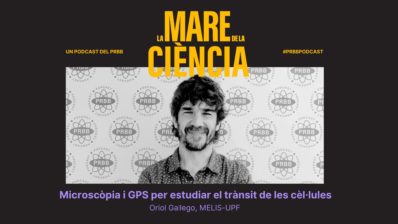The electronic toxicology project (eTOX) started in January 2010 as one of the projects funded in the first call of the IMI (Innovative Medicines Initiative), a unique public-private partnership between the European Community and the European Federation of Pharmaceutical Industries and Associations (EFPIA). Ferran Sanz, director of the Research Programme on Biomedical Informatics (GRIB, IMIM-UPF) and academic coordinator of eTOX, evaluates the project’s achievements so far as very positive.
What exactly is eTOX about?
All IMI projects, including eTOX, bring together European pharmaceutical companies and academic groups to address scientific challenges that are a priority for the pharmaceutical industry. In the case of eTOX, the aim is to facilitate the early prediction of drug toxicity through computational models. It will last a total of five years.
“The aim of eTOX is to facilitate the early prediction of drug toxicity through computational models”
How is that done?
The first step is an intensive data collection exercise in which structural and toxicological information on tested compounds is gathered from the archives of the participating pharmaceutical companies. This is the first time they have agreed to share such sensitive information, originating from animal experiments. On the basis of this shared information, computer models can be created to allow better in silico prediction of toxicology for newly designed drugs. The future perspective is to be able to develop new drugs more efficiently, with less toxicity and in a shorter time period. This procedure will not only reduce the costs of drug development, but also the amount of animal experimentation.
“This procedure will not only reduce the costs of drug development, but also the amount of animal experimentation”
Who are the participating partners?
Out of the 25 partners from different European countries, 13 are pharmaceutical companies, five small and medium-sized enterprises, and seven academic institutions. Originally there were 11 pharmaceutical companies, but two more asked to collaborate and contribute after the project had started. The fact that the participation of the companies implies a substantial financial and manpower contribution from their part without receiving any public funding, indicates their interest in the topic.
What were the achievements in this first one and a half year of the project?
In the first year the highlight has been the positive attitudes of all of the partners, which result in the consolidation of a very productive teamwork. Even though some partners are usually competitors searching for new pharmacological targets and drugs, within the eTOX project they collaborate enthusiastically to achieve a common goal: to find a solution to avoid toxicity and develop safer new drugs.
We have already created the database for the shared information and procedures for semiautomatic data extraction from the toxicology reports. We have also defined the computational architecture of the predictive system and we have already developed the first modules of such system.
“Even though some partners are usually competitors searching for new pharmacological targets and drugs, within the eTOX project they collaborate enthusiastically to achieve a common goal: to find a solution to avoid toxicity and develop safer new drugs”
What steps will be taken in the future?
Once the database infrastructure has been set up, it is being fed with the information extracted by the archives of the pharmaceutical companies. On the basis of the data accumulated in the database in each moment, the predictive system is being progressively trained. Then, it will be tested within each company with internal data not included in the eTOX database. According to the incremental experience and emerging problems, the system will be improved and further developed.






